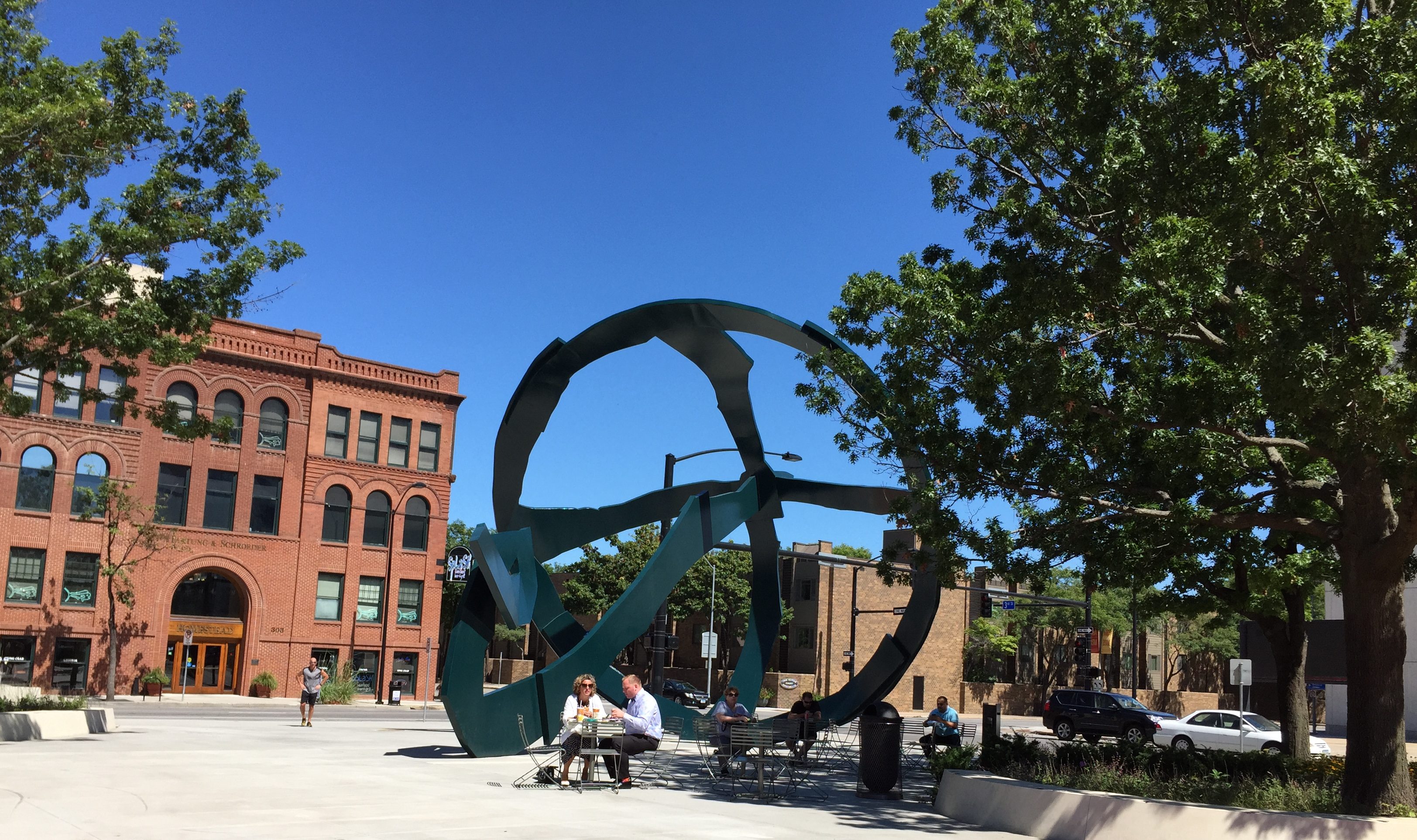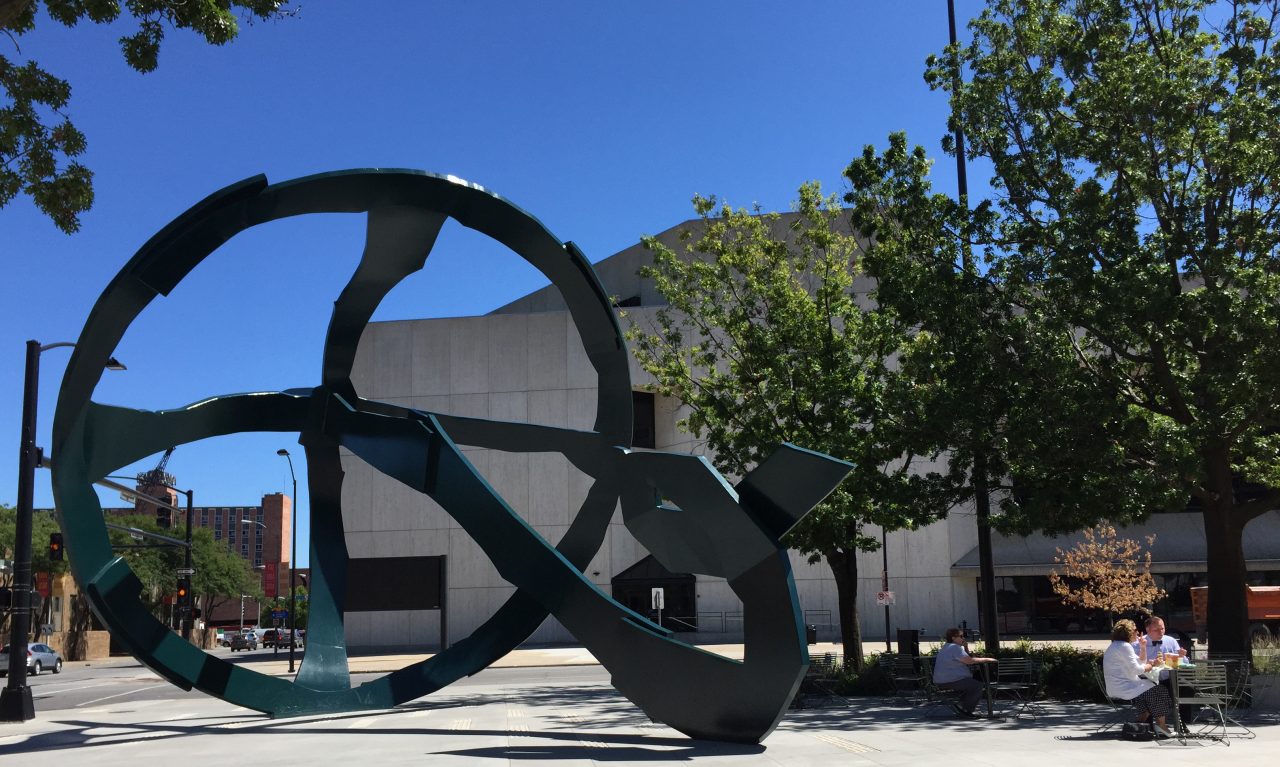


Crusoe Umbrella
A year prior to visiting what would be the site of their first-ever public art commission, Claes Oldenburg and his wife and collaborator, Coosje van Bruggen, paid a visit to van Bruggen’s father, who in retirement had begun to grow a long and ragged beard. The couple joked that this beard gave him the appearance of Robinson Crusoe, the famous castaway character from the eponymous novel by Daniel Defoe. Something about the joke stayed with them up until their visit to Cowles Commons (then called Nollan Plaza), where the public art was to be placed. The large pool and waterfall that existed in the space at the time, as well as tall buildings that surrounded the plaza, made the site seem like an island of open space within an urban sea.
In Robison Crusoe, the main character fashions an umbrella from sticks and plants that he finds on the island where he is stranded. Although his umbrella does not function as such, Crusoe keeps it with him throughout the novel, clearly seeing it as a symbol of the civilization to which he longs so dearly to return. In their desire to deviate from the hard geometry that seemed to dominate contemporary large-scale public sculpture in the 1970s, Oldenburg and van Bruggen seized upon the image of Crusoe’s umbrella for its organic forms and relevance to the site.
As the couple said in a statement, “We wanted to place an exotic element in the midst of prosaic circumstances and turn the center of the continent, paradoxically, into an island in the sea.”

This iconic sculpture is made of weathering steel and painted with a polyurethane enamel to help it endure the extreme climates to which public art in the Midwest is subject. It was fabricated by Lippincott, Inc. in North Haven, Connecticut. The engineer is J. Robert Jennings. The public work of art was commissioned in September 1978 by the Civic Center of Greater Des Moines, with a matching grant from the National Endowment for the Arts and donations from local sources. It was installed November 27, 1979 and inaugurated November 29, 1979.
In January 1978, after a year living and working in the Netherlands, we returned to the studio in New York, resolved to devote ourselves entirely to outdoor scale site-specific sculptures permanently located in public situations.
Claes Oldenburg
